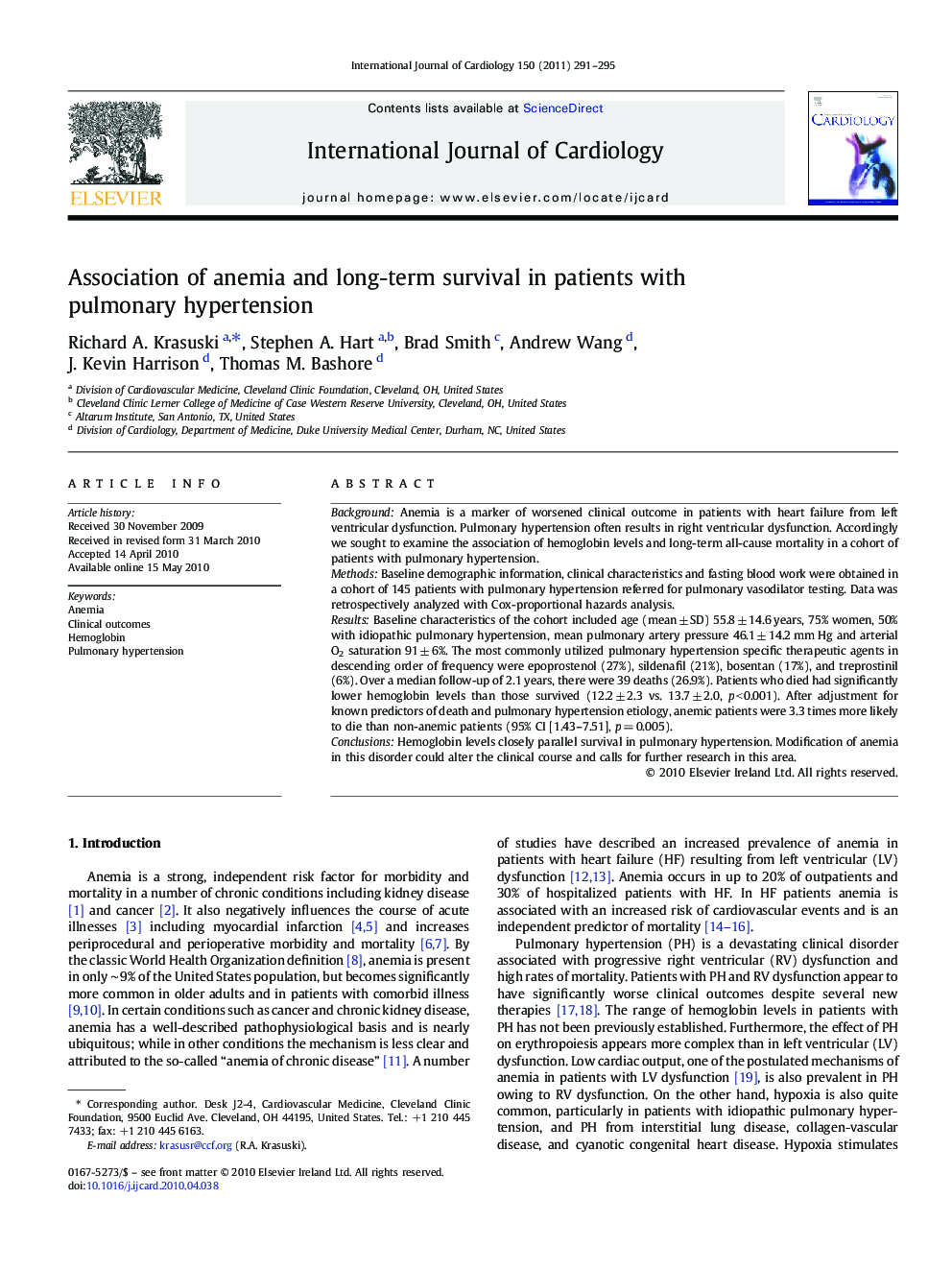| Article ID | Journal | Published Year | Pages | File Type |
|---|---|---|---|---|
| 2930695 | International Journal of Cardiology | 2011 | 5 Pages |
BackgroundAnemia is a marker of worsened clinical outcome in patients with heart failure from left ventricular dysfunction. Pulmonary hypertension often results in right ventricular dysfunction. Accordingly we sought to examine the association of hemoglobin levels and long-term all-cause mortality in a cohort of patients with pulmonary hypertension.MethodsBaseline demographic information, clinical characteristics and fasting blood work were obtained in a cohort of 145 patients with pulmonary hypertension referred for pulmonary vasodilator testing. Data was retrospectively analyzed with Cox-proportional hazards analysis.ResultsBaseline characteristics of the cohort included age (mean ± SD) 55.8 ± 14.6 years, 75% women, 50% with idiopathic pulmonary hypertension, mean pulmonary artery pressure 46.1 ± 14.2 mm Hg and arterial O2 saturation 91 ± 6%. The most commonly utilized pulmonary hypertension specific therapeutic agents in descending order of frequency were epoprostenol (27%), sildenafil (21%), bosentan (17%), and treprostinil (6%). Over a median follow-up of 2.1 years, there were 39 deaths (26.9%). Patients who died had significantly lower hemoglobin levels than those survived (12.2 ± 2.3 vs. 13.7 ± 2.0, p < 0.001). After adjustment for known predictors of death and pulmonary hypertension etiology, anemic patients were 3.3 times more likely to die than non-anemic patients (95% CI [1.43–7.51], p = 0.005).ConclusionsHemoglobin levels closely parallel survival in pulmonary hypertension. Modification of anemia in this disorder could alter the clinical course and calls for further research in this area.
